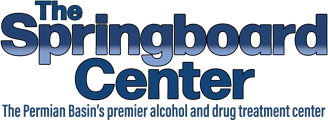The moment you receive notice of a workplace drug test, panic might set in — even if your last drink was days ago. Many employees wonder: does alcohol show up on a drug test for work?
Detection windows vary dramatically based on test type, from 12 hours to 80 days. Understanding if alcohol shows up on a drug test for work helps you make informed decisions about your consumption.
Let’s cut through the confusion and examine exactly what these tests can—and cannot—reveal about your alcohol use so you’re in the know about workplace alcohol testing.
Are you or a loved one struggling with a drinking problem? Our rehab in Midland utilizes Trac9 informatics, the world’s largest addiction database, to assess patient progress on a weekly basis. Our holistic approach to recovery focuses on treating the whole person, equipping you with the tools you need to build a brighter future.
Types of Alcohol Testing

When considering “Does alcohol show up on a drug test for work?” It’s important to understand the various alcohol testing methods that are available to employers.
Breath Tests
Breathalyzers represent the front line of alcohol detection in workplace settings. These devices measure ethanol molecules in your expired air, providing immediate results with remarkable accuracy.
Modern breath testing devices can detect alcohol concentrations as low as 0.001%, though most employers focus on the legal limit of 0.08% or their own established thresholds. While breathalyzers excel at identifying current intoxication, they can’t detect alcohol consumption from previous days.
Blood Tests
Blood alcohol testing stands as the gold standard in alcohol detection, offering unparalleled accuracy in determining current intoxication levels. This method measures the exact concentration of ethanol in your bloodstream, providing results that can detect consumption from the past 12-24 hours.
Healthcare professionals must conduct these tests in controlled environments, making them less common for routine workplace screening but essential for post-accident investigations or reasonable suspicion cases.
Related: Can You Force Someone to go to Rehab?: A Guide for Concerned Families
Urine Tests
Urine testing introduces a longer detection window through the analysis of alcohol metabolites – specifically EtG (ethyl glucuronide) and EtS (ethyl sulfate).
The EtG test detection time can extend up to 80 hours, making it one of the most comprehensive testing methods available. These biomarkers can reveal alcohol consumption from the past 48-72 hours, with some advanced tests detecting use up to 80 hours post-consumption.
This workplace alcohol testing method has become increasingly popular among employers seeking to monitor employee alcohol use patterns rather than just current intoxication.
Detection Windows for Alcohol

The answer to “Does alcohol show up on a drug test for work?” depends largely on the type of test used and timing.
Short-Term Detection Periods
The timeframe for detecting alcohol varies significantly by testing method. Breath tests typically show positive results 12-24 hours after your last drink. Blood tests maintain accuracy for up to 24 hours, while standard urine tests can detect alcohol for 12-48 hours.
Understanding these windows helps you make informed decisions about your consumption patterns relative to workplace testing schedules.
Long-Term Detection Methods
Hair testing has emerged as a powerful tool for identifying chronic alcohol use, providing a detection window of up to 90 days. Modern drug test alcohol detection methods can identify both recent and long-term use patterns.
Additionally, advanced biomarker testing can reveal patterns of heavy alcohol use through phosphatidyl ethanol (PEth) analysis, which can remain detectable in blood for up to three weeks. These methods primarily serve to identify consistent, heavy alcohol use rather than occasional consumption.
Factors Affecting Detection Time
Your body’s alcohol processing speed depends on various individual factors. Body mass, gender, age, and liver function significantly impact how quickly alcohol leaves your system. Regular eating patterns, particularly having food in your stomach while drinking, can slow alcohol absorption and affect detection times.
Even genetic factors play a role, with some individuals naturally metabolizing alcohol more quickly than others.
Related: How to Tell If Someone is an Alcoholic
Workplace Testing Policies
Most organizations implement comprehensive drug and alcohol testing programs that include pre-employment alcohol screening, random testing, post-accident testing, and reasonable suspicion testing.
Industries regulated by the Department of Transportation (DOT) follow strict testing protocols, while private employers generally have more flexibility in crafting their policies. Union environments often include specific provisions regarding alcohol testing in their collective bargaining agreements, providing additional protections for workers.
Does Alcohol Show Up on a Drug Test for Work?: False Positives and Their Causes
Common Products That Can Trigger Results
A common question is does alcohol show up on a drug test for work when using everyday products containing alcohol? Surprisingly common items can trigger false positives in alcohol tests.
Certain mouthwashes, breath sprays, and cold medicines contain enough ethanol to affect breathalyzer results. Hand sanitizers, particularly during frequent use, can release ethanol vapors that may influence breath testing. Even some foods, like very ripe fruits or kombucha, contain trace amounts of naturally occurring alcohol that could potentially trigger positive results in highly sensitive tests.
Medical Conditions and Medications
Various medical conditions can complicate alcohol testing results. Auto-brewery syndrome, though rare, causes the body to produce ethanol internally.
Diabetes can create acetone in breath, which some devices might mistake for alcohol. Certain prescription medications, including some cough syrups and oral pain medications, contain alcohol as a preservative. Additionally, some medications can affect how your body processes alcohol, potentially extending detection times.
Sample Contamination Issues
The integrity of test samples remains crucial for accurate results. Environmental factors, improper storage conditions, or breaks in the chain of custody can compromise sample validity. Bacterial contamination in urine samples can actually produce alcohol post-collection, leading to false positives.
Professional testing facilities maintain strict protocols to prevent these issues, including temperature monitoring and tamper-evident seals.
Related: Is Zoloft Addictive?: Myths vs. Medical Facts
Legal Rights and Requirements
For those concerned about the question, “Does alcohol show up on a drug test for work?” understanding your rights is crucial.
Employee Protections
Workers maintain significant rights regarding workplace alcohol testing. The Americans with Disabilities Act (ADA) protects employees with alcohol use disorders who seek treatment.
You have the right to refuse testing, though this may have employment consequences. Privacy laws ensure your test results remain confidential and are shared only with necessary personnel. Additionally, employers must maintain consistent testing policies to prevent discrimination.
Employer Testing Guidelines
Your company drug testing policy should clearly outline all testing procedures and consequences. Department of Transportation regulations set the gold standard for workplace alcohol testing, requiring specific procedures and cutoff levels.
State laws vary significantly, with some requiring written policies, employee notification, or specific testing circumstances. Reasonable suspicion testing demands documented observations from trained supervisors, following specific protocols to protect both employer and employee rights.
Confidentiality Requirements
Test results fall under strict confidentiality guidelines governed by HIPAA and other privacy laws. Employers must maintain separate, secure files for testing records, distinct from general personnel files.
Access to results requires strict need-to-know basis documentation, with violations potentially resulting in significant penalties. Results cannot be shared with other employers without explicit employee consent.
Impact on Employment
A positive alcohol test can significantly affect your employment status, potentially resulting in disciplinary action or termination. However, many employers offer second-chance agreements or employee assistance programs before taking terminal action.
The specific consequences often depend on industry regulations, company policy, and whether the test was pre-employment or during employment. Some organizations provide opportunities for result verification or appeal processes.
Find Support and Treatment for Alcohol Use at The Springboard Center
At The Springboard Center, we understand the complex relationship between alcohol use and professional life. Our comprehensive treatment programs offer confidential support while working around your schedule.
Whether you’re exploring our medical detox, residential program, or outpatient program services, our experienced team provides personalized treatment plans designed for lasting recovery.
Take the first step toward balancing your health and career by contacting us today!




